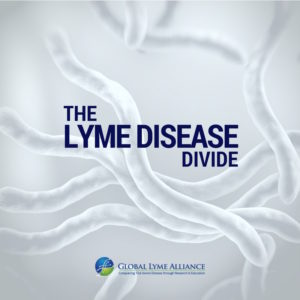
How to Make Sense of Conflicting Lyme Disease Facts
by Scott Santarella, CEO, Global Lyme Alliance
With the possible exception of HIV, no infectious disease in recent history has been as misunderstood and divisive as Lyme disease. On one hand, there are tens of thousands of people suffering from debilitating physical and neurological symptoms who are unable to get the help they need from physicians, public health officials and insurance companies. On the other hand, the Infectious Diseases Society of America (IDSA) and the Centers for Disease Control and Prevention (CDC) maintain that Lyme disease is “easy to diagnose, easy to cure” and dismiss the persistence of symptoms over time, even after treatment. It’s no wonder that many people are confused about Lyme prevention, symptoms and treatment fundamentals.
Recently we’ve attended a number of public Lyme discussions held in Lyme endemic states and are both encouraged and concerned about how the disease is being discussed by the public and some in the medical community.
One event we attended focused on the very real threat of Lyme disease and children. Children ages 3-14 have a higher risk of contracting Lyme because they are physically closer to the ground, where ticks are plentiful. Children play in the grass, roll in leaves, run through bushes, thus increasing their exposure to Lyme-infected ticks. But because the symptoms of Lyme can be varied and non-specific—headaches, joint pain, anxiety, confusion, memory loss, anger, insomnia, for example— parents and teachers may not realize their children are ill. And physicians who are not well-versed in Lyme may not attribute it to the illness.
We were glad to hear speakers talk about the challenges in diagnosing Lyme and co-infections. If the disease is left untreated, it can cause a host of problems that can severely affect children’s long-term health, their behavior and school performance. Current Lyme tests are highly inaccurate, so diagnosis should be a combination of testing and a consultation with a Lyme-literate doctor.
Those attending the event walked away with a clear understanding of the true challenges related to Lyme disease in children. And also the importance of being a strong advocate for your child—you know their symptoms better than anyone. However, we attended another talk that was riddled with common misperceptions about the disease’s symptoms, diagnosis and treatment. A few examples:
What We Heard: Lyme is a very treatable, curable disease.
FACT: Although Lyme can be cured if diagnosed and treated in the early stages, up to 20 percent of those who are treated still go on to develop serious chronic symptoms including severe fatigue, muscle and joint pain, insomnia, headaches and “brain fog.”
What We Heard: It takes 36-48 hours for tick to infect a person.
FACT: The longer a tick is attached, the higher the risk of transmission. But it is possible to get Lyme disease even if a tick is attached for less than 24 hours.
What We Heard: If you have Lyme, you will see a clear bull’s eye rash, unless it’s on your back or somewhere hard to see.
FACT: Not everyone who has Lyme exhibits a rash, much less a bull’s-eye rash. At least 20 percent of patients never develop the rash and fewer than 50 percent of Lyme patients ever recall seeing one. If you are “lucky” enough to see any type of rash, take a picture to show your doctor. A flu-like condition is also a common sign of Lyme infection and it can occur with or without a rash.
What We Heard: There’s a lot of bad press about the tests not being good.
FACT: There is still no reliable diagnostic test for Lyme. The standard blood test lacks sensitivity and is more than 55% inaccurate.
What We Heard: You shouldn’t need more than 4 weeks of antibiotics, 6 at the most if the patient requests it.
FACT: Existing guidelines from the CDC recommend against treating Lyme disease-positive patients with antibiotics for more than 28 days. However, up to 20% of patients treated with this recommended course of antibiotics will have lingering symptoms such as fatigue, pain, or joint and muscle aches. Longer treatment is advocated by the International Lyme and Associated Diseases Society (ILADS), based on a patient’s symptoms.
What We Heard: It’s very atypical with late Lyme disease for one’s hands and feet to be affected.
FACT: Although knee pain is most common in late-stage Lyme, the disease can cause pain and tingling in other body parts. In addition to Lyme, a tick can carry other tick-borne co-infections as well such as Babesia, Bartonella and Ehrlichia and transmit them in a single bite. When a patient suffers from atypical symptoms, a doctor must also consider possible co-infections as the cause.
What We Heard: Getting a tick tested for Lyme is unnecessary unless you think it helps the town learn how many cases of Lyme disease it has from ticks.
FACT: Some doctors will not treat a patient until symptoms of Lyme disease have manifested and this loss of precious treatment time often results in more severe symptoms. Tick testing can help you make treatment decisions before symptoms arise since testing may reveal the presence of other disease-causing co-infections the tick is carrying and transmitting.
The challenges in diagnosing Lyme and its co-infections early make it difficult for both the patient and the clinician. Knowing the facts about the disease can help. Your best option is strong prevention, but that’s not fail-proof. If you feel that you or someone you love may have Lyme, learn the symptoms and contact a Lyme-literate doctor for guidance. Please explore our website for the latest information, resources and support.


GLA
Admin at GLA
